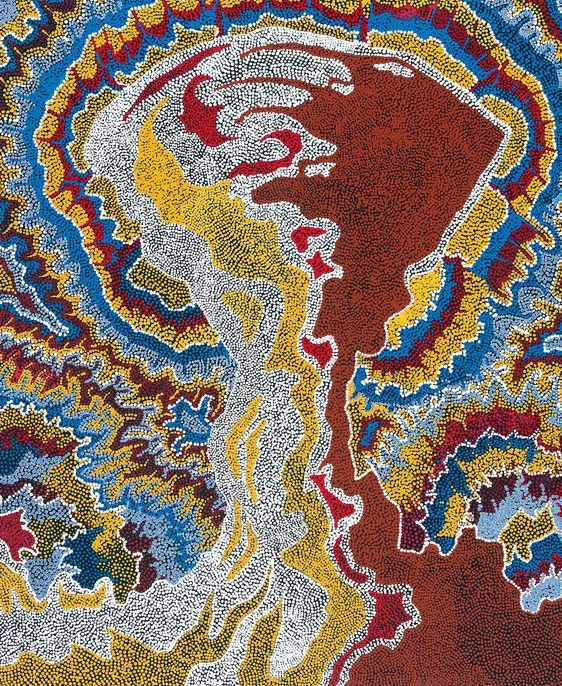In a dozen years spanning 1946 through 1958, the United States, flush with a World War II victory secured in part through the dropping of atomic bombs on the Japanese cities of Nagasaki and Hiroshima, and hurtling itself into the Cold War with the Soviet Union, pummeled the Marshall Islands in Micronesia with some 67 nuclear bombs. The attacks—or rather the atomic testing program—destroyed some of the islands entirely, and saddled others with millions of cubic feet of radioactive soil and plutonium. From 1952 to 1963, Britain detonated a dozen major and 200 minor nuclear devices across Maralinga in Southern Australia, home to the southern branch of the Pitjantjatjara people.
The exhibition “Exposure: Native Art and Political Ecology” gathers together art made by Indigenous artists from those areas and around the world, in work that explores the ongoing effects of nuclear testing, the mining such weapons require, and the accidents that sometimes result from them. Originating at the Institute for Indian American Arts in Santa Fe, the show is now on view at the El Paso Museum of Art, arriving just in time for conversations about the erasure of Native Americans from the biopic Oppenheimer and other ways we tell the history of nuclear weapons.


